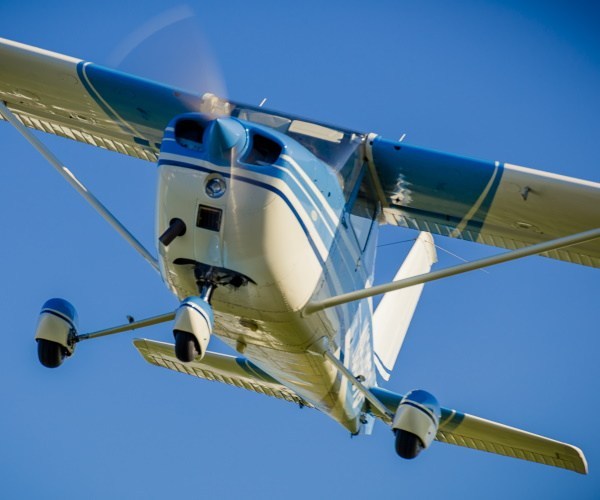Regular maintenance and inspection of your aircraft are critical to ensuring safe flight, each and every time you leave the runway. A failure to closely monitor your airplane’s condition can lead to unexpected issues in the air, which should always be avoided.
This is especially true for the aircraft exhaust system, which operates within a highly corrosive and high-temperature environment, making it more susceptible to cracking, warping, and other forms of wear.
Any single point of failure within the airplane exhaust system can lead to an extremely dangerous situation, so at least a brief inspection should be performed as part of every preflight routine. A more in-depth inspection should also be performed annually to fully assess the condition of all aircraft exhaust components.
Here are some aircraft exhaust inspection and maintenance tips to help ensure your airplane is in peak working condition every time you take to the skies.
Check for signs of leaking and metal fatigue
One of the key purposes of exhaust inspection is to look for signs of leaking anywhere within the system. These signs can often be spotted via a visual inspection by checking to see if there is any discoloration on any of the components. Leaking will often result in a grayish soot buildup, which can also occasionally take the form of a yellowish or orangish powdery residue. Such buildup is most common around welds, clamps, and flanges.
Signs of leaking may not always be visible to the naked eye, in which case a pressure test is the best way to go. Consult your aircraft maintenance manual to ensure your mufflers are pressure-tested to the properly required point.
Another key purpose of airplane exhaust system inspection is to check for metal fatigue on any surfaces, which can take the form of bulges, cracks, or other forms of distortion or corrosion.
Exhaust riser inspection
It’s often best to start your inspection where the exhaust system attaches to the cylinder. Risers that attach to the cylinder at the exhaust port are exposed to the most extreme temperatures of the whole system, making them particularly vulnerable. Cracking where the riser is welded to the flange is common due to over-torqueing of the exhaust nuts or poor-fitting exhaust systems putting undue stress at these critical areas.
As the exhaust port opens, the combustion cycle is still taking place as the fuel/air mixture makes its way out of the cylinder. This extreme heat means that a fractured exhaust riser can quickly start a fire under the cowl.
Exhaust flange inspection
You should carefully inspect the exhaust flange, including the gasket, studs, and nuts that hold it together. Make sure there are no leaks on the part, as these can cause extreme pitting and can quickly erode the cylinder studs and cause further damage to the cylinder and flange.
Aircraft muffler inspection
A cracked muffler is one of the most dangerous issues an aircraft can experience, as it can result in carbon monoxide leaking into the cabin during flight and potentially incapacitating everyone on board.
During inspection of the aircraft muffler, heat deflectors and shrouds should be removed in order to ensure there is no mixing of exhaust gas and cabin air.
The sidewalls and lower sections of the muffler can be especially prone to deterioration. If material thinning is suspected, try probing with an awl to see if it punches through the metal.
Some aircraft mufflers include flame cones or baffles – perforated metal cones inside the muffler that can warp and fracture over time due to heat, vibration, erosion, and corrosion. If a piece of the baffle breaks off, it can block the muffler and reduce the power output from the engine.
Removing the exhaust system during inspection
During in-depth inspection, it is good practice to entirely remove the exhaust system from the aircraft if you are able. This provides access to the cylinder exhaust ports so you can check for cracks, in addition to providing a close-up view of the exhaust valve. It also ensures you are able to notice any exhaust gasket leaks that could otherwise be hidden from view.
Removing the nuts during this process helps ensure the studs are inspected and kept in good condition. Full removal of the system during inspection also allows you to separate, inspect, and reassemble the slip joints, which promoted reduces stress, vibration, and movement of the aviation exhaust system.
Get in the air and stay there with Nicrocraft
If an aircraft exhaust part is cracked, corroded, warped, or otherwise damaged, it needs to be either repaired or replaced before you return to the skies. And Nicrocraft is here to help.
Nicrocraft provides flight schools, FBOs, distributors, and aircraft owners with aircraft exhaust parts that are higher-quality and more durable than the competition – and we’ve been doing so for more than 50 years. All of our aircraft exhaust parts are built to the latest OEM specifications at our state-of-the-art facility in Oklahoma City.
We are a leading global supplier of exhaust parts for Piper, Cessna, Cirrus, Beechcraft, and more. We prioritize efficient communication and rapid turnaround to get you the parts you need, when you need them. We’re aviation people whose ultimate goal is to help you get in the air and stay there.
Contact us or request a quote today for the best way off the ground with the only aircraft exhaust parts built to take the heat.
Disclaimer: The content of this post is intended to provide educational background only and is not meant to serve as a definitive guideline or recommendation. Nicrocraft does not assume liability for any actions taken in accordance with this content.



